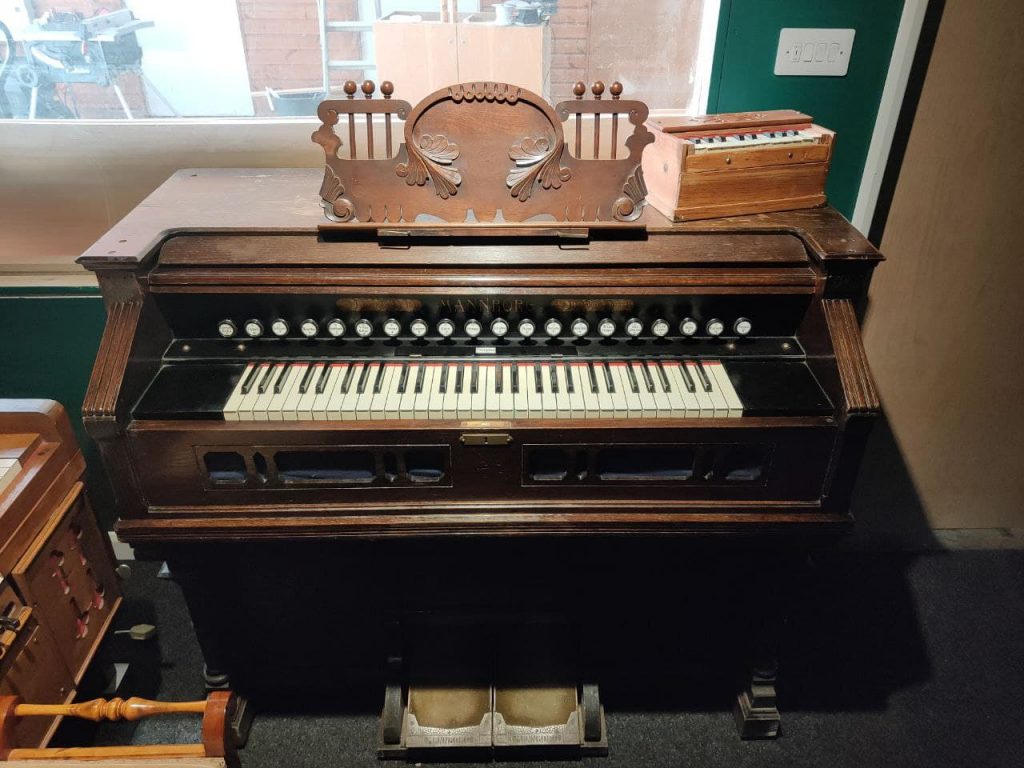The Mannborg Harmonium

Theodor Mannborg was born in Karlstad, Sweden on 19th November 1861. In 1879 he was apprenticed as a carpenter to J.P. Nystrom’s Harmonium Workshop in Karlstadt, progressing from manual to machine production and from Pressure Wind to Suction Wind systems. He emigrated to Germany in 1886 to train with the pipe-organ builder Urban Kreutzbach in Borna, later becoming an assistant to Klais, an organ-builder in Bonn.
He established his own factory in 1889 in Borna, building the first suction organs produced in Germany. Thanks to his extensive theoretical knowledge and practical experience, Mannborg was able to manufacture the special tools and components necessary for building the harmonium himself.
Over time, the demand for Mannborg harmoniums became so great that expansion was necessary so, in 1894, he relocated to Leipzig, rationalizing production by purchasing new woodworking and special machines.
Ten years later he opened a new factory at Angerstrasse in the Lindenau district of Leipzig. He was instrumental in founding the Association of German Harmonium Manufacturers.
By modernizing the harmonium case, creating new voices, registration options and characteristic tones almost identical to those of orchestral instruments, Mannborg succeeded in almost completely eliminating the once overpowering US competition and making his factory the leading and most efficient harmonium production facility. His company owned numerous patents and proprietary designs and succeeded in establishing the suction wind harmonium as a fully recognized instrument. When he died in 1930 the business was taken over by his son Karl who ran it until his death in 1941. The firm was then taken over by the state-owned piano manufacturer Renisch & Hupfeld in 1948, operating as a part of VEB Leipziger Pianofortefabrik Behlitz-Ehrenberg.
John Lennon played a Mannborg harmonium on the Beatles’ hit single ‘We Can Work It Out’ (1965) and the band used the instrument on other songs recorded during sessions for their ‘Rubber Soul’ album. They used the instrument on the famous “final chord” of ‘A Day in the Life’, and on ‘Being for the Benefit of Mr. Kite!’, on the 1967 album ‘Sgt. Pepper’s Lonely Hearts Club Band’. The single “Hello, Goodbye” and the track “Your Mother Should Know” were both written using a harmonium.
Our Mannborg is a Style 30 “Normal Harmonium” with casework cut down by a previous owner, the somewhat plain casework is at complete odds with its tonal capabilities, many visitors so far even in our short period of having owned this organ, comment on how stunning this fine little example is.
